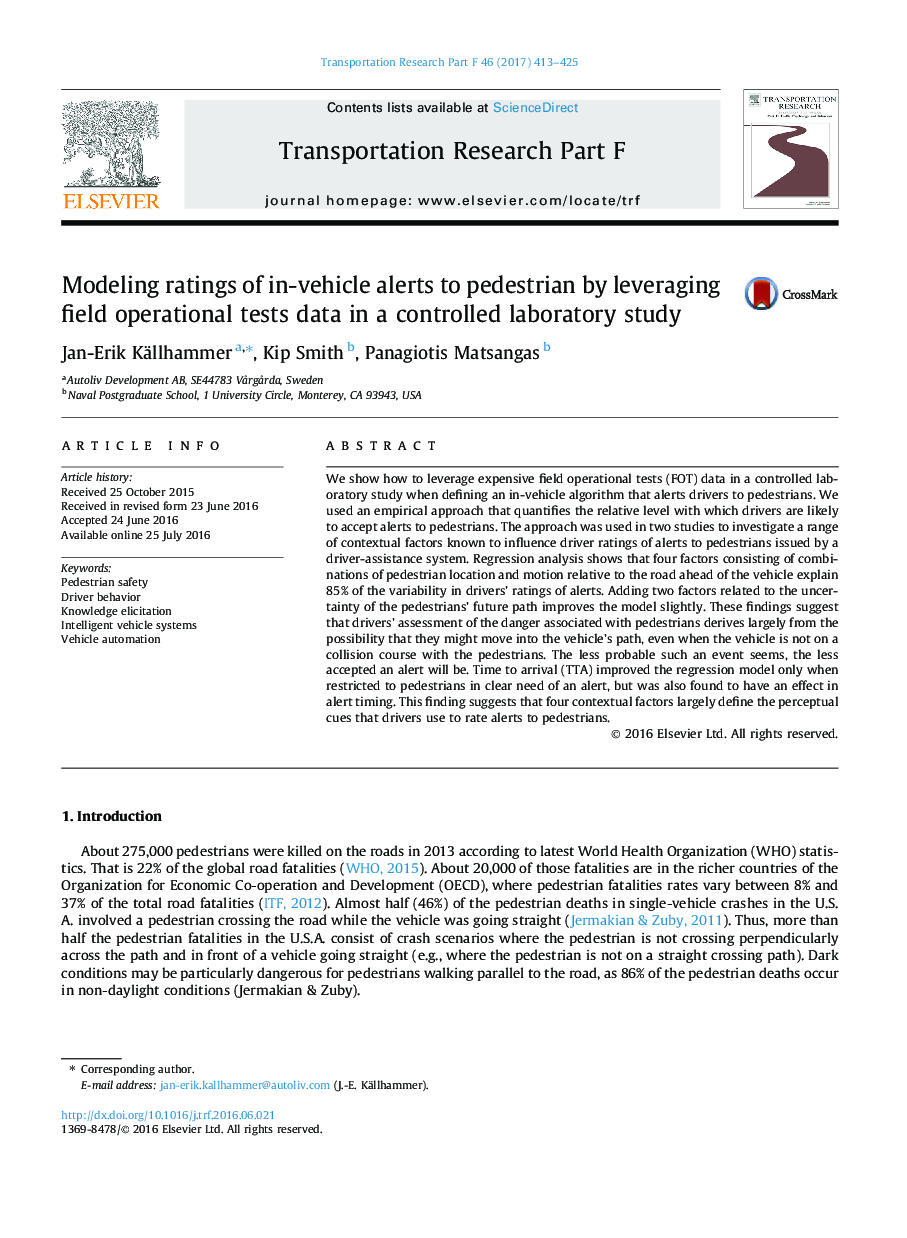| کد مقاله | کد نشریه | سال انتشار | مقاله انگلیسی | نسخه تمام متن |
|---|---|---|---|---|
| 5037388 | 1370219 | 2017 | 13 صفحه PDF | دانلود رایگان |
- Volunteer drivers rated the relative level of acceptability of in-vehicle alerts.
- The alerts were recorded during a pair of field operational tests.
- They flag vehicle-pedestrian encounters where there was no collision.
- Regression models predict driver ratings using contextual parameters.
- Drivers appear to assess pedestrian encounters using pedestrian motion and location.
We show how to leverage expensive field operational tests (FOT) data in a controlled laboratory study when defining an in-vehicle algorithm that alerts drivers to pedestrians. We used an empirical approach that quantifies the relative level with which drivers are likely to accept alerts to pedestrians. The approach was used in two studies to investigate a range of contextual factors known to influence driver ratings of alerts to pedestrians issued by a driver-assistance system. Regression analysis shows that four factors consisting of combinations of pedestrian location and motion relative to the road ahead of the vehicle explain 85% of the variability in drivers' ratings of alerts. Adding two factors related to the uncertainty of the pedestrians' future path improves the model slightly. These findings suggest that drivers' assessment of the danger associated with pedestrians derives largely from the possibility that they might move into the vehicle's path, even when the vehicle is not on a collision course with the pedestrians. The less probable such an event seems, the less accepted an alert will be. Time to arrival (TTA) improved the regression model only when restricted to pedestrians in clear need of an alert, but was also found to have an effect in alert timing. This finding suggests that four contextual factors largely define the perceptual cues that drivers use to rate alerts to pedestrians.
Journal: Transportation Research Part F: Traffic Psychology and Behaviour - Volume 46, Part B, April 2017, Pages 413-425
